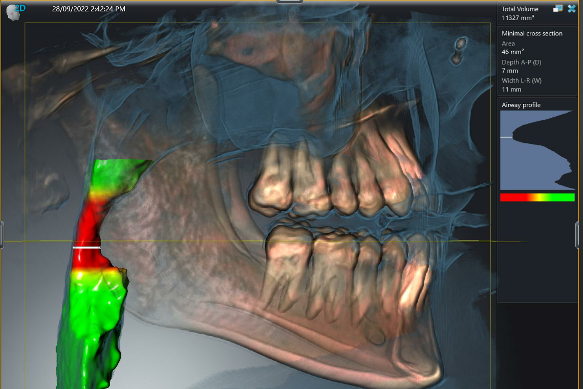Jul 7, 2023 Modern medicine and dentistry are just beginning to see the real benefits of collaboration between the professions. One needs only to look at the recent promotion of the HPV vaccination in dental offices through provincial colleges to see how medicine and dentistry can drive improved patient outcomes and risk reduction for the future (1). The future of this collaboration is continuing to build with diagnostic technologies such as saliva testing for oral cancer, nutritional assessments, AI software to determine patient risk (OraQ), and imaging devices like Cone Beam Computed Tomography (CBCT). As dentists, the more we can help to support the already overpressured health care system, the better we can help patients achieve a strong wellness profile. Sleep Apnea has been an underdiagnosed and growing concern in North America and the global patient community (2). With the rise of BMI scores and the average lifespan increasing, we are seeing an increase in the prevalence of Obstructive sleep apnea (3) The modern dental clinician can use validated scales such as the STOP BANG and the Epworth Sleep Scale as qualitative screening tools to identify patients to be sleep tested. A tool to help with this process is the concept of the “Sinus Inroad”, where a dentist uses a CBCT image to identify airway constrictions and sinus pathology on a patient (Fig1). Utilizing software to colorize and analyze the airway morphology, a dentist can educate the patient on the possible indications for OSA. While it is understood that OSA only occurs during sleep and a CBCT is taken on a patient that is awake, the power of the visual communication can correspond with their subjective scores and help build a narrative for the patient to be tested. There is another level to the use of CBCT and that is the evaluation of the paranasal sinuses of the patient. Research has demonstrated that over 30% of patients will have sinus pathology present in a CBCT(4,5). An example of this is the CBCT section of the following patient complaining of sleep issues and snoring (Fig2/3). From our medical/dental history, qualitative scales and CBCT, we can develop treatment recommendations and be able to make valuable referrals to the medical community to help this patient to be treated. In this case the patient has large tonsils, swollen turbinates and minimal space for air to be moved through the nasal cavity. Treatment plan involves palliative care (lavage, steroid nasal spray, humidifier), referral to respiratory clinic for sleep testing, a and referral to ENT through patient GP to evaluate improving anatomical contractions in the airway. Providing the CBCT images, a detailed history and any dental concerns in a more thorough referral to the medical community, we can help this patient receive more efficient care. The “Sinus Inroad” concept helps dental clinicians to support patient’s medical concerns when they are in the dental office. A major benefit of this is earlier intervention and more qualified referrals to the medical community. The other major benefit is that we as dentists have helped the patient on a path to wellness before we have even looked at their teeth. The impact of a wellness approach will drive long lasting and quality relationships with our patients. References: Images Taken with Dentsply Sirona Orthophos Axeos 11 x 10 FOV
The Sinus Inroad Concept
Fig 1

Fig 2

Fig 3

Benjafield AV, Ayas NT, Eastwood PR, Heinzer R, Ip MSM, Morrell MJ, Nunez CM, Patel SR, Penzel T, Pépin JL, Peppard PE, Sinha S, Tufik S, Valentine K, Malhotra A Lancet Respir Med. 2019;7(8):687. Epub 2019 Jul 9.

